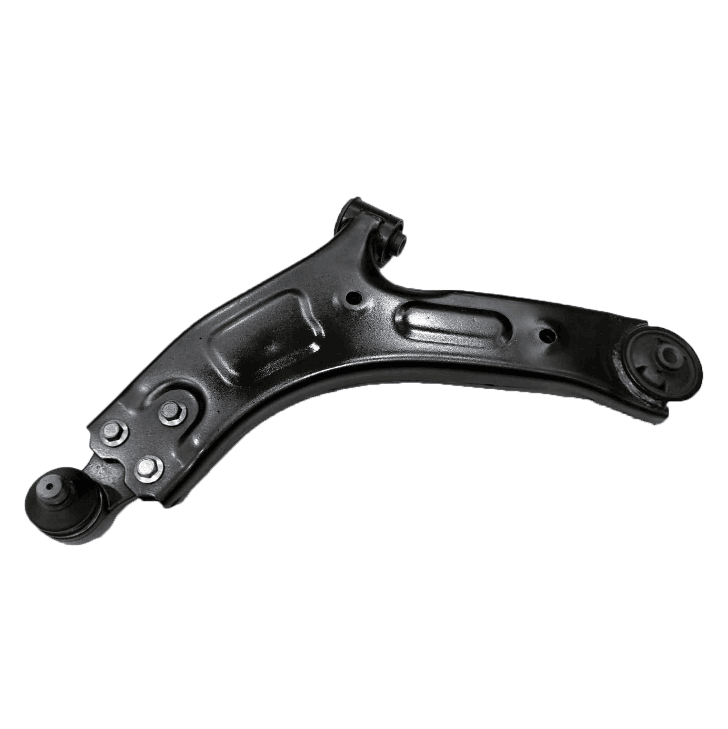The front lower control arm is a vital component of a vehicle’s suspension system, playing a crucial role in ensuring stability, handling, and overall driving comfort. Whether you are a car enthusiast or a vehicle owner seeking to understand more about suspension systems, this guide will provide valuable insights into the front lower control arm and its significance in maintaining a smooth and controlled ride.
The Function of Front Lower Control Arms

The front lower control arms, also known as lower wishbones, are suspension components that connect the frame or subframe of a vehicle to the steering knuckle or wheel hub assembly. Their primary functions include:
a) Supporting the Vehicle’s Weight: Front lower control arms bear the weight of the vehicle, along with the forces experienced during acceleration, braking, and cornering. They provide a stable connection between the chassis and the wheels, ensuring proper weight distribution and balance.
b) Maintaining Wheel Alignment: Control arms play a critical role in maintaining wheel alignment. They position the wheels vertically and horizontally, preventing excessive camber, caster, or toe angles. Proper wheel alignment enhances tire wear, stability, and overall handling.
c) Absorbing Road Impacts: Control arms act as a link between the wheels and the vehicle body, absorbing shocks and vibrations caused by uneven road surfaces. They help isolate the cabin from road imperfections, providing a smoother and more comfortable ride.
d) Facilitating Suspension Movement: By allowing controlled movement of the suspension components, front lower control arms enable the wheels to move up and down over bumps and dips. This movement ensures optimal tire contact with the road, improving traction and handling.
Components and Design of Front Lower Control Arms
Front lower control arms consist of several key components, each designed to fulfill specific functions. Understanding these components and their design characteristics is essential for selecting the right control arms for your vehicle. Some important aspects to consider include:
a) Construction Materials: Control arms are typically made from sturdy materials such as steel, aluminum, or forged alloys. The choice of material affects the strength, durability, and weight of the control arm.
b) Bushings and Ball Joints: Control arms feature bushings and ball joints at their connection points. Bushings are made of rubber or polyurethane and provide cushioning and flexibility, allowing controlled movement. Ball joints, on the other hand, provide pivoting motion, enabling the wheels to turn and move in response to steering inputs.
c) Design Variations: Control arm designs can vary depending on the vehicle’s suspension system and configuration. Some common variations include double wishbone, MacPherson strut, or multi-link setups. It is important to understand the specific design of your vehicle’s suspension system to choose compatible control arms.
d) Aftermarket Options: The aftermarket offers a wide range of front lower control arms, including stock replacement or performance-oriented options. Performance control arms often feature reinforced construction, adjustable designs, or improved bushing materials to enhance handling and responsiveness.
Importance of Maintaining Front Lower Control Arms
Proper maintenance and regular inspection of front lower control arms are crucial for ensuring optimal suspension performance and vehicle safety. Neglecting control arm maintenance can lead to various issues, including:
a) Reduced Handling and Stability: Worn or damaged control arms can negatively impact a vehicle’s handling and stability. Excessive play in the control arm bushings or ball joints can result in imprecise steering, increased body roll, and compromised traction.
b) Premature Tire Wear: Misaligned or worn control arms can cause uneven tire wear patterns, leading to premature tire degradation and the need for frequent replacements. This not only affects vehicle performance but also adds to overall operating costs.
c) Safety Risks: Control arm failure can pose significant safety risks, as it compromises the stability and control of the vehicle. Complete failure or separation of a control arm could result in loss of control, especially during cornering or sudden maneuvers.
d) Suspension Component Wear: Worn control arms can place additional stress on other suspension components, such as struts, shocks, and sway bars. This can accelerate wear and potentially lead to the failure of other critical suspension parts.
